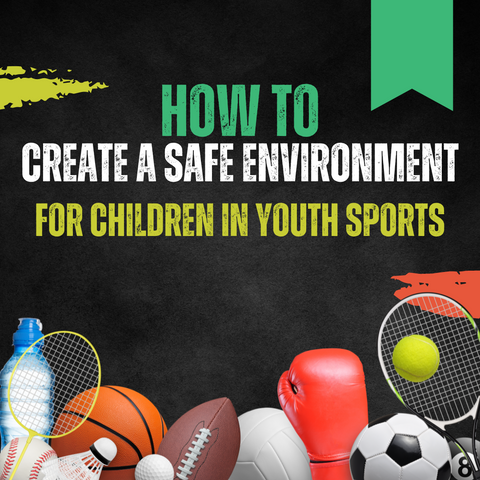
How to Create a Safe Environment for Children in Youth Sports
Creating a safe environment for children in youth sports is a multifaceted challenge that requires a concerted effort from all stakeholders involved, including parents, coaches, and the children themselves.
This article will explore the various dimensions of this topic, offering practical steps and strategies that can be used to ensure the highest level of safety for children participating in youth sports.
Understanding the Need for Safety in Youth Sports
The Prevalence of Risks in Youth Sports
Youth sports, despite their many benefits, also present a range of potential risks to children. 
These include physical injuries, emotional trauma from competitive stress, or exposure to inappropriate behaviour.
Recognising these risks is the first step in mitigating them and creating a safer environment for our young athletes.
The Impact of a Safe Environment on Children’s Development
A safe environment does more than protect children from harm. It also promotes healthier mental and emotional development, increases self-esteem, and fosters a sense of belonging.
By creating a safe environment, we're not just protecting children; we're empowering them to thrive.
Preventing Abuse and Harassment in Youth Sports
Recognising and Discussing Inappropriate Behaviors
It's vital to maintain an open line of communication with children about inappropriate situations.
This begins with educating them about what constitutes wrongful adult behaviour and encouraging them to report any uncomfortable situations.
Establishing Strict Policies for Adult-Child Interactions
Sports organisations must enact strict policies that delineate the boundaries of physical contact between adults and athletes.
This step ensures that all interactions are in the best interest of the child, thereby reducing the likelihood of abuse or harassment.
Ensuring Environmental Safety in Youth Sports
Importance of Good Air Quality and Reduced Exposure to Harmful Substances
Whether indoor or outdoor, the quality of the air that children breathe during sports activities is crucial. Additionally, exposure to secondhand smoke, cleaning chemicals, and pesticides should be minimised to maintain a healthy environment.
Adequate Equipment and Facility Maintenance
Regular maintenance of sports equipment and facilities can significantly reduce the risk of injuries.
This responsibility falls upon the management of sports organisations, who must ensure these measures are consistently adhered to.
Fostering Inclusivity and Non-Discrimination
Building a Welcoming and Supportive Environment
Every child deserves to feel welcome in their sporting environment. This sense of belonging can be achieved by fostering an atmosphere of support, team spirit, and sportsmanship, which also serves to prevent discrimination.
Implementing Non-Discrimination Training Programs
Introducing training programs that educate athletes about behaviour and discrimination can greatly reduce instances of bias and bullying.
By arming children with this knowledge, we enable them to contribute to a more inclusive sporting environment.
Developing Physical, Emotional, and Social Safety
Prioritising Physical Safety and Comfort
Having the proper safety equipment available for each sport is paramount.
It not only reduces the risk of physical injuries but also gives the children confidence in their safety, thereby enhancing their overall performance.
Encouraging Emotional Well-being and Social Inclusion
Creating emotional safety involves ensuring that learners feel comfortable, both physically and emotionally.
This entails a nurturing atmosphere that values inclusivity, listens to athlete input, and promotes social interaction among all team members.
In Summary
To create a truly safe environment for children in youth sports, it requires a holistic approach that addresses the physical, emotional, and social aspects of safety.
By preventing abuse, ensuring environmental safety, fostering inclusivity, and promoting overall well-being, we can create a nurturing environment where children can grow, learn, and excel in their respective sports.
FAQs
What can I do as a parent to help create a safe sports environment for my child?
As a parent, you can ensure your child's safety by educating them about inappropriate behaviour, advocating for proper safety measures, and encouraging inclusivity and fair play.
How can coaches contribute to a safer sports environment?
Coaches can help by maintaining open communication with athletes, enforcing strict adult-child interaction policies, and promoting inclusivity and sportsmanship within the team.
Why is air quality important in youth sports?
Good air quality is crucial as children are more susceptible to pollutants due to their developing respiratory systems. Poor air quality can lead to health issues like asthma and allergies.
What should a non-discrimination training program include?
A non-discrimination training program should educate children about the different forms of discrimination, the importance of inclusivity, and strategies for fostering a respectful and inclusive team environment.
How does emotional safety contribute to a child's performance in sports?
Emotional safety ensures that children feel comfortable and confident, reducing stress and anxiety. This positively impacts their performance as they can focus on their sport without fear or hesitation.
